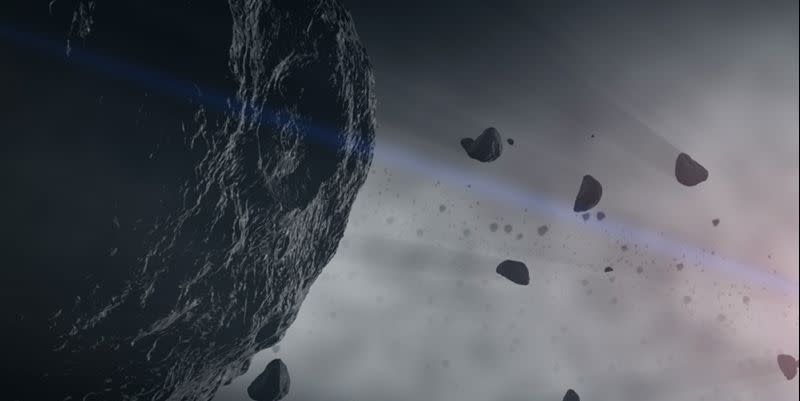Early Asteroid Impacts Could Have Spurred Today's Tectonic Activity

A new paper has revealed that tectonic activity on this planet—a unique feature in the solar system—could have been spurred by a stream of asteroid impacts.
Previously, computer models have shown that only very large extra-terrestrial impacts could have spurred tectonic activity on an early Earth.
The new research shows that even smaller impacts could have spurred the processes that shape our dynamic planet.
4.6 billion years ago, a swirling cloud of rock and rubble coalesced into the planet we now call home. For millions of years after, our planet was bombarded by rocky bits from the distant reaches of our solar system.
These asteroid impacts continued to shape the planet for millions of years and influenced the dynamic system of plate tectonics that makes our ever-shifting planet so unique in the solar system, according to new research published Nov. 26 in the journal Geology.
Geologic evidence of tectonic plate activity begins around 3.2 million years ago, coincidentally, during the heavy bombardment—a volatile period in Earth’s history marked by a near constant stream of asteroid impacts. A team of scientists, led by geophysicist Craig O’Neill of Macquarie University in Sydney, Australia, found spherule beds—layers of rock marked by round particles formed by rock pulverized in an extra-terrestrial impact—which suggest there may have been a connection.
"Our work shows there is a physical link between impact history and tectonic response at around the time when plate tectonics was suggested to have started," O'Neill said in a statement. "Processes that are fairly marginal today—such as impacting, or, to a lesser extent, volcanism—actively drove tectonic systems on the early Earth.”
Impacts larger than 186 miles (300 km) could have generated a “thermal anomaly” in Earth’s mantle, O’Neill said in a statement. This anomaly would have been powerful enough to spur an upwelling of mantle material—one that could jumpstart tectonic activity.
But there was a catch: all of the geologic evidence from the Archaean period, which took place 4 to 2.5 billion years ago, suggests that most asteroid impacts Earth saw at the time were smaller—around 62 miles (100 km) or less.
In order to solve this mystery, the team created a series of computer models that plotted the potential impacts these collisions would have had on Earth’s mantle. They found that, were the early, molten Earth primed and ready for tectonic activity, these impacts surely would have paved the way for modern plate tectonics to take shape.
You Might Also Like

